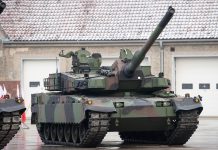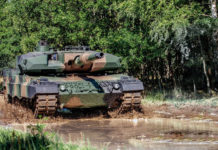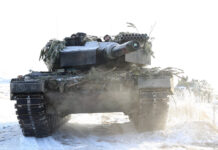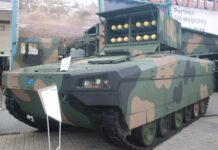Over the next couple of years, the Polish Armed Forces will continue with the modernisation of its technical park.
With the addition of new weapon systems and the upgrade of those currently still in service, the Armed Forces intend to significantly enhance their operational and combat capabilities, therefore boosting country’s security in an increasingly unstable international environment.
Modernisation of Polish Leopard 2A4 MBTs
For the past several years, the modernisation of the fleet of 142 LEOPARD 2A4 Main Battle Tanks (MBTs) to the 2PL standard has remained a top priority for the Polish Armed Forces. The project is managed by a consortium of ZM Bumar-Łabędy, a subsidiary of the Polish Armaments Group (PGZ, Polska Grupa Zbrojeniowa) and a number of other companies of the Group. German Rheinmetall Landsysteme is a strategic partner in the project.

The contract for modernising the first batch of 128 vehicles was signed at the end of 2015.
At that time, it was expected that the project would be finalised by late 2020. The contract included an option for the upgrade of an additional batch of 14 MBTs, which was activated in 2018. The follow-on vehicles were to be transferred to the Army in 2021.
However, according to information provided recently by the Armament Inspectorate, which acts on behalf of the Polish MoD, these deadlines will not be met. According to current estimates, the full fleet of 142 modernised LEOPARD 2PL vehicles should be delivered to the Army by 31 July 2023 (with 43 vehicles in 2020).
On 24 December 2019, the Armament Inspectorate signed an amendment to the original agreement, covering additional works and services which need to be provided as part of the LEOPARD 2PL modernisation. As a result, €124M had to be added to the programme’s budget, bringing the total cost of the LEOPARD 2PL modernisation project to €700M.
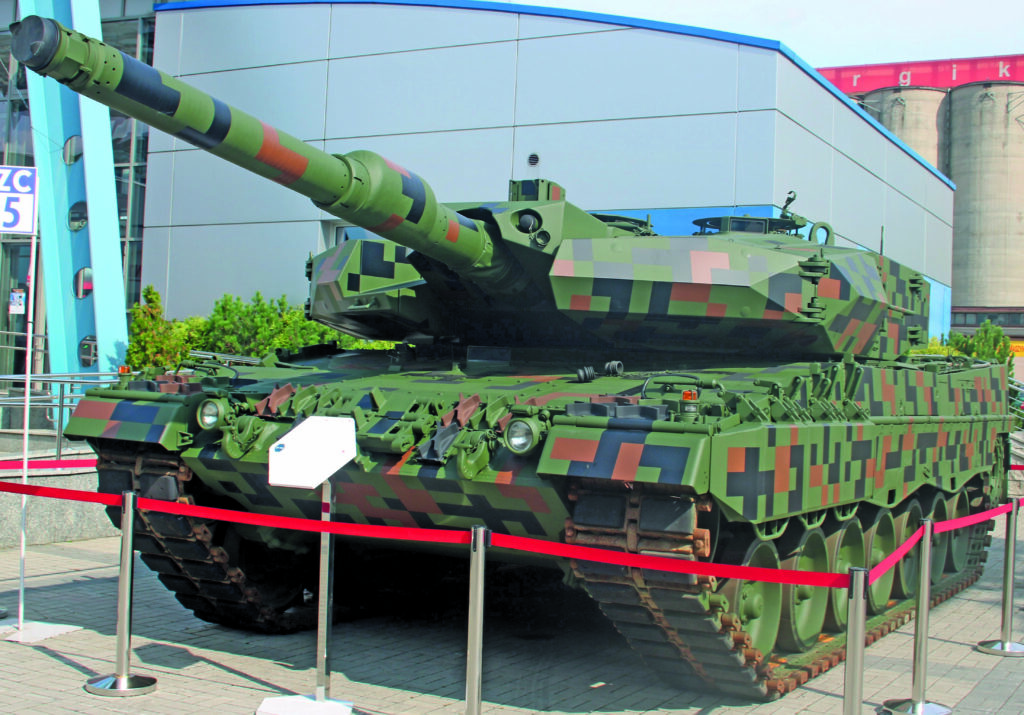
At the end of May 2020, the Polish Army took delivery of a number of prototype Leopard 2PL MBTs; the vehicles were to be delivered to the 10th Armoured Cavalry Brigade stationed in Świętoszów shortly thereafter. In the two weeks preceding the delivery, intensive work was carried out to complete the tests of the LEOPARD 2PL MBTs and to begin handing over the vehicles to the Army.
“The delivery of the first units is a key stage in the LEOPARD 2PL programme. The acceptance of vehicles by the Ordering Party opens the possibility for our Consortium to deliver further batches of tanks. The LEOPARD 2PL is one of our priorities, and the last few weeks has been a time of intense work in which the new management of Bumar-Łabędy has been very much involved. We can already see the effects, and this is only the beginning, because the next, finished tanks are waiting for the start of handover procedures,” said Andrzej Kensbok, President of the Management Board of PGZ.
Delayed Delivery
Delivery of the first batch of modernised LEOPARD 2PL MBTs was significantly delayed due to ongoing tests of the platform and the requirement to implement a number of additional improvements, some of which were not originally taken into consideration.
“The tests of the LEOPARD 2PL prototype have not yet concluded due to a number of areas, which still need to be confirmed in terms of their compliance with several dozen requirements included in the Technical Specification,” Maj. Krzysztof Platek, the spokesman of the Armament Inspectorate, informed in February 2020. He further added that despite the continued trials of LEOPARD 2PL prototypes, the whole modernisation programme is well underway. Furthermore, several dozen serial-production LEOPARD 2A4 MBTs were expected to be stored already at the ZM Bumar-Labedy facilities, waiting for the upgrade.
“The contractor verified the technical condition of the stored vehicles and is upgrading them in parallel to ongoing trials,” Platek stated. “Particular MBTs are at different stages of the modernisation process,” he added.
In reference to Maj. Platek’s statement, PGZ confirmed shortly afterwards that “it is not a secret that the modernisation of LEOPARD 2A4 MBTs to the 2PL standard is delayed. At the moment, we are in the final stages of testing the prototype vehicle, which was manufactured and delivered by our German partner Rheinmetall.”
“We can confirm that the agreement contains several amendments, which clarify the terms and conditions it includes. It is a normal procedure in relations between a contractor and a contracting authority, especially in the case of such complicated and technically advanced programmes, such as modernisation of LEOPARD 2A24 MBTs.”
“The deadline for the conclusion of the contract is an important factor, but not the only determinant for its proper finalisation, which has to be taken into consideration by both sides of the agreement. (…) Our priority is to deliver a product, which complies with the requirements of the MoD. We work hand in hand with representatives of the department to assure that the upgraded MBTs will reach the Army as soon as possible”
PGZ added that “irrespective of the ongoing trials of the LEOPARD 2PL prototype, ZM Bumar-Labedy is continuously engaged in the initial process of manufacturing and assembly of a number of LEOPARD 2A4 MBTs, which were delivered to the manufacturer for the awaited upgrade. These works will allow [us] to step up deliveries of manufactured MBTs, once the final configuration of the LEOPARD 2PL vehicle is accepted by the Army.”

Overall, the LEOPARD 2PL modernisation programme includes the implementation of a number of new onboard systems and equipment to the platform. This includes: new/upgraded observation and aiming sites for the commander and gunner; improved ballistic protection of the turret; a new electronic system for turret traverse and cannon elevation; installation of more effective fire/explosion prevention system; a new command and control system; an additional APU generator; additional cargo carrying equipment and upgraded evacuation/towing system adjusted to the higher weight of the platform; a new fire control system; new ammunition (DM63 anti-tank and DM11 multi-purpose); and a day/night reverse camera for the driver.
Upgrade of Obsolete T-72M1s
The future fleet of 142 modernised LEOPARD 2PLs will constitute the core of the Polish Army’s MBT fleet, complemented by 105 relatively modern LEOPARD 2A5s. The country will also have to rely on 270 obsolete T-72M1, Soviet-era MBTs and 233 PT-91 TWARDY vehicles, which are a locally designed modification of the former platform.
However, MBTs of Soviet/Russian origin offer minimal combat capability and are not considered to be meeting the requirements of the modern battlefield in terms of firepower, speed, range, observation or survivability.
In a move to improve the combat capability of the most obsolete MBTs, in 2019, the Polish MoD launched a programme for an overhaul and minimal upgrade of slightly more than 300 T-72M1 vehicles. The agreement was signed at the end of July 2019 between the MoD and a consortium composed of the PGZ, ZM Bumar-Łabędy and Wojskowe Zakłady Motoryzacyjne (WZM). A number of other public and private defence companies, like PCO or OBRUM, were also involved in the project.
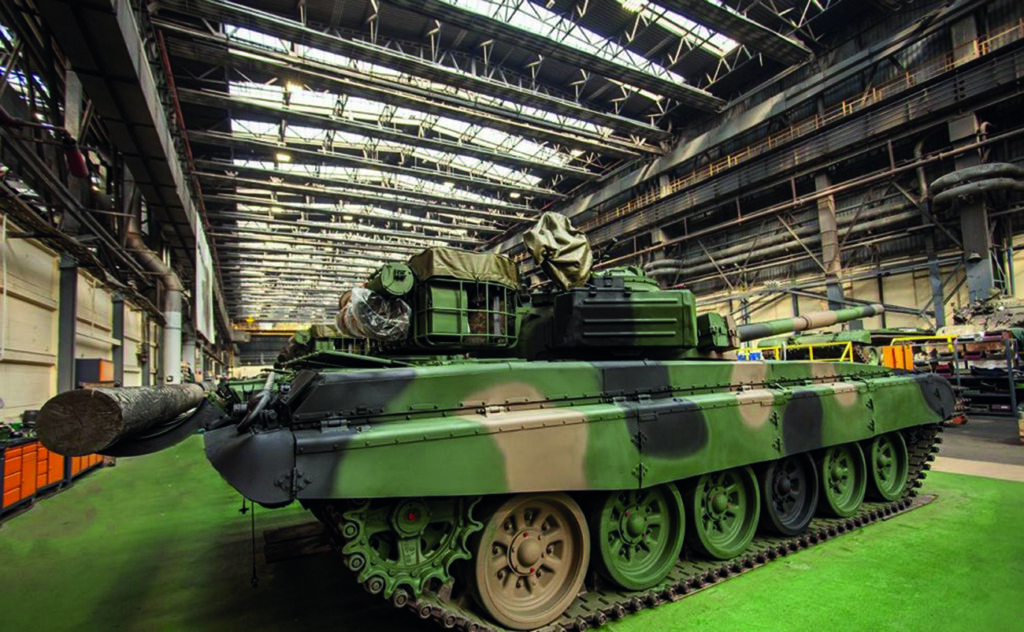
The first batch of upgraded T-72M1 MBTs was delivered to the Polish Army in late 2019. Shortly thereafter, the vehicles underwent their first field trials. Deliveries of the modified T-72s should run until 2025, with 46 MBTs planned for hand-over in 2020, 35 in 2021 and in 2022, 34 in 2023, 33 in 2024 and 39 in 2025, bringing the total number to 230 vehicles.
The contract has an option for an additional 88 MBTs to undergo modification. The overall programme’s value is €382M.
The scope of works under the contract will be limited by the capabilities of the local defence industry. “We are modernising the equipment, which is in the inventory of the Polish Army.
Thanks to this upgrade, MBTs will be equipped with modern targeting, navigation and observation systems, as well as new digital comms,” said Mariusz Blaszczak, the Minister of Defence. As a result of the overhaul, the T-72s’ full operational capability will be resolved.
Despite the fact that the upgrade of T-72-M1 MBTs was long awaited, the programme has been subject to wide criticism. This is mostly due to its limited scope, due to which the vehicles will undergo only minor modifications, which will not significantly enhance their firepower or operational capability. The scope of upgrade works includes the installation of more efficient observation sets for the commander, driver and gunner, which will enhance the situational awareness of the crew, especially in low visibility conditions, as well as new digital internal/external communication systems, such as radios and FONET system from WB Group. Furthermore, the programme has a limited budget. It is a result of a number of other, higher priority modernisation or procurement projects being followed by the MoD at the moment. As a result, the upgrade plan does not include essential modifications such as the replacement of engines and transmissions (and installation of a modern, highly efficient powerpack), stabilised cannon with a fire control system, new ballistic protection kits, such as explosive reactive armour which is mounted on the modernised PT-91s or the procurement of new, more modern ammunition.
Poland Forms a new Tank Battalion in the East

A new tank battalion is being formed as part of the 19th Mechanised Brigade, stationed in the city of Lublin. The unit will be subordinate to the recently established 18th Mechanised Division, which will have the task of protecting Poland’s eastern regions from any kind of military threat..
The formation of a new tank battalion commenced with the delivery of a batch of recently modified T-72M1 MBTs. Although it is not known how many tanks were delivered to the unit so far, a video published on social media shows at least two vehicles being transported by trailer trucks. Eventually, the battalion will consist of 58 modified T-72M1 MBTs.
The new tank battalion will be incorporated into the structure of the 19th Mechanised Brigade which will eventually be composed of two such tank units, bringing the total number of MBTs at its disposal to 116. The second tank battalion is currently serving under the command of the 21st Podhale Rifles Brigade, which is also part of the 18th Division, but will be transferred to the 19th Brigade in due course. In return, the 21st Podhale Rifles Brigade will take command of a motorised battalion, which is yet to be formed. The new unit will be equipped with ROSOMAK / Patria AMV 8×8 armoured vehicles.
In addition to the tank battalions, the 19th Brigade will consist of the 19th command battalion, 3rd mechanised battalion, 19th mechanised battalion, 19th self-propelled artillery squadron and 19th air defence squadron. The 18th Mechanised Division is also composed of the 1st “Warsaw” Armoured Brigade, which until recently was subordinate to the 16th Mechanised Division.
The Army Requires Next Generation MBTs
According to the Polish MoD, the programme to overhaul and upgrade the fleet of T-72M1 MBTs is just an interim solution. Its goal is to allow the Army to maintain a significantly high number of MBTs in active duty units, until the time comes to gradually phase out the obsolete vehicles and replace them with newer ones. “We all await and work for the start of construction of the new generation tanks by the Polish defence industry,” acknowledged Minister Blaszczak.
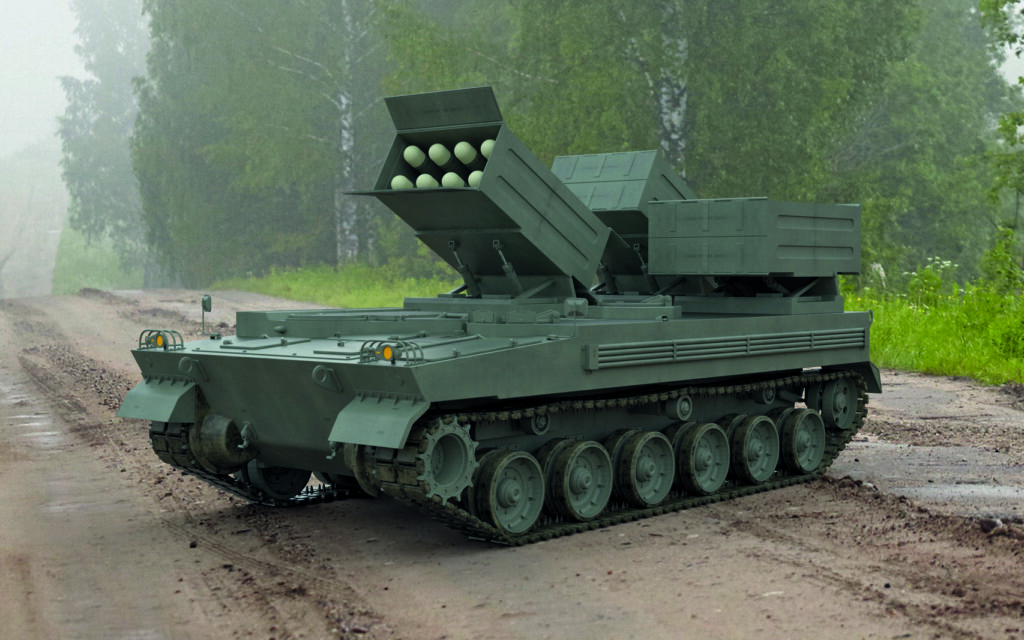
The Polish MoD has already announced its intention to launch a ‘Next Generation MBT’ programme in the undefined future. It is expected to result in the procurement of several hundred of the next generation MBTs. These new vehicles will allow the Army to phase out obsolete T-72M1s and PT-91s, and will supplement the LEOPARD 2PLs and 2A5s in service for the time being.
At this moment, it remains unclear which path the Polish authorities will choose in order to successfully launch and conclude the ‘Wilk’ programme. One plan calls for designing and developing the new platform independently, using the manufacturing capabilities of local industry and scientific institutions and with minimal support from foreign partners.
“We are restoring manufacturing capabilities as regards to armoured vehicle technology.
(…) Restoring this capability (…) is another step towards establishing an industrial base for future works on the new MBT for the Polish Armed Forces,” Witold Słowik, the President of the Management Board of the PGZ at that time, admitted in 2019.
The alternative is that Poland develops a next generation MBT in cooperation with foreign partners. The country could apply for example to become a member of one of the pan-European projects, such as Franco-German Main Ground Combat System (MGCS), in which Poland shows a considerable level of interest.
Over the past several months, Polish authorities have signalled their interest in the project and expressed the intention of becoming a part of it. In a commonly held view, becoming a partner in the MGCS project could significantly benefit the local defence industry and in the long term would allow Poland to modernise its obsolete MBT fleet with the introduction into service of a next generation, European-designed platform.
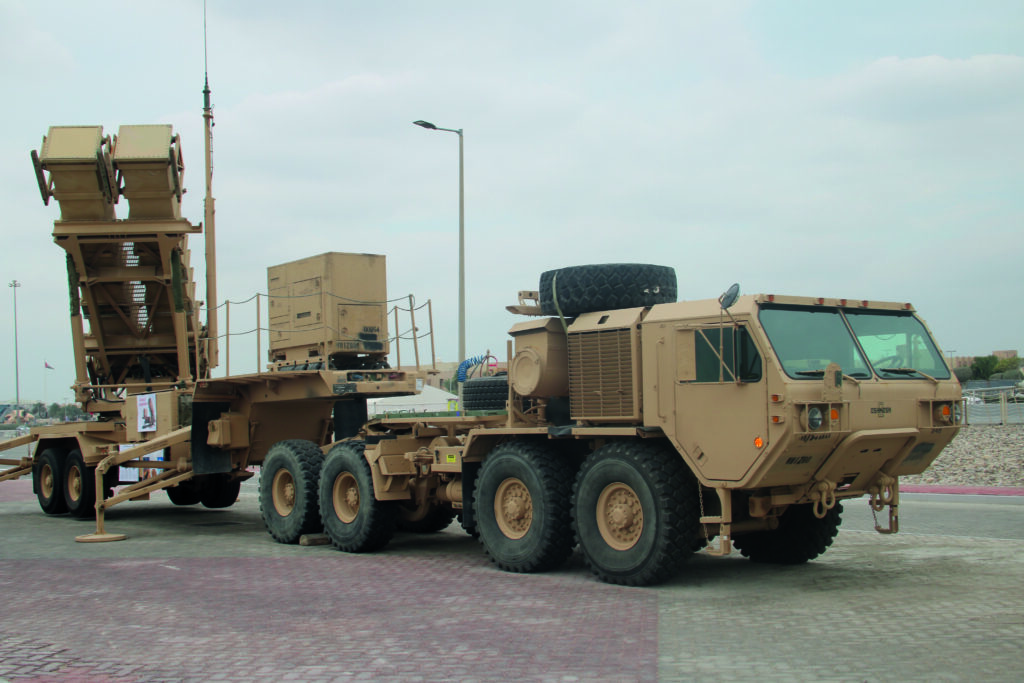
Regardless which path the Polish authorities choose to follow regarding the procurement of the next generation of MBTs, it seems obvious that the country would need to be open for cooperation with foreign entities and political partners. Developing the new combat platform either independently or in partnership with Germany and France under the MGCS project, Poland would also seek to allow its own defence manufacturers to benefit from the programme.
However, the developments of the past few months, especially with the Coronavirus pandemic, coupled with the economic slowdown, might result in a redefinition of MBT procurement goals by the Polish MoD. It is very likely that the project will be delayed, or even cancelled, even before it is actually ever launched.
Nevertheless, the Polish Army is well aware of the fact that the use of PT-91 and T-72M1 Soviet-era MBTs has almost run its course, and the further use of these platforms is proving to be ineffective when it comes to boosting the country’s security.
Therefore, the MoD might eventually decide to acquire a significant batch of ‘of-the-shelf’ or even second-hand and Western-origin MBTs. For the past couple of years, the idea of acquiring ex-US M1 ABRAMS tanks has come to light. If this were to happen, it would not come as a total surprise since Poland has been extensively procuring US-manufactured weapon systems for decades, as part of its investment in the Polish-US alliance and security of the country.
However, if such an eventually were to occur, it would lead to the further ‘fragmentation’ of the Polish MBT fleet, which during the transition period would be composed of Soviet-era PT-91s and T-72M1s, ex-German LEOPARD 2PLs and 2A5s and ex-US A1 ABRAMS MBTs. It would also further complicate the logistical support of the operator and lead to increased costs in maintenance and overhaul of the Army’s operational vehicles.
New IFV will Change the Posture of the Polish Army
Under the BORSUK programme, the Polish Army intends to procure several hundred modern, tracked, Infantry Fighting Vehicles (IFV). According to some estimates, the country has a requirement for over 2,000 such vehicles. They will replace the currently operated, Soviet-era BWP-1s, which are obsolete and no longer meet the requirements of the modern battlefield.
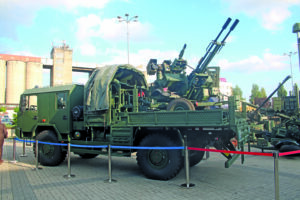
The new IFV platform is designed and developed by the local defence industry with Huta Stalowa Wola, a subsidiary of PGZ, the leader of the project. During the International Defence Industry Exhibition (MSPO) 2019 in Kielce, the manufacturer presented a prototype of the next generation swimming IFV (Nowy Bojowy Pływający Wóz Piechoty, NBPWP).
The prototype of BORSUK/NBPWP has already undergone a series of intense static and dynamic field trials, during which a number of its capabilities, such as speed, manoeuvrability, survivability and firepower were tested. The manufacturer also had to confirm that the platform complied with the high technical and tactical requirements of the Polish Army.
The future Polish IFV will be equipped with a locally designed 30mm turreted, remote-controlled weapon system (Zdalnie Sterowany System Wieżowy, ZSSW-30), which will also become standard equipment in the currently operated Rosomak/Patria AMV 8×8 armoured personnel carriers. The ZSSW-30 turret was designed to fight, destroy and suppress enemy light and heavy armoured targets and other objects – including the enemy’s infrastructure – in different climatic conditions, and to provide fire support for units during combat operations, at any time.

According to the manufacturer, the new Polish IFV platform will have a swimming capability, allowing it to cross wide water obstacles, as well as to operate in diversified terrain and various weather conditions. Furthermore, the NBPWP vehicle will be characterised by its high manoeuvrability and ability to be easily transported by air or land.
The next generation Polish IFV will provide a high level of ballistic protection for the crews and dismounted soldiers, able to withstand direct impact from firearms and rocket-propelled grenades, as well as the explosion of IEDs or mines. The manufacturer intends to develop several variants of the NBPWP, from a light, swimming vehicle to a heavily armed combat platform.
Modern Tank Destroyers to Protect the Suwalki Gap
Under the current iteration of the ‘Ottokar-Brzoza’ programme, Poland intends to procure a number of modern tank destroyers. According to the Armament Inspectorate, five local and international manufacturers have shown interest in the project and submitted their applications to take part in the technical dialogue procedure. This process precedes all major defence-related tenders in Poland.
The future tank destroyers of the Polish Army will be armed with anti-tank missiles and equipped with advanced sensors. They will replace the currently operated, Soviet-era BRDM-2 vehicles, armed with obsolete 9P133 MALUTKA-P effectors. BRDM-2 no longer meet the requirements of the modern battlefield and do not provide enough protection for the crew.

The current technical dialogue is actually a second iteration of the project. Its goal is to allow the Armament Inspectorate to determine and better define a number of technical requirements for the future tank destroyer platform. The initial procedure allowed only tracked vehicles to be considered, while the current round also includes wheel-based platforms.
The list of companies participating in the technical dialogue includes: AMZ Kutno, MBDA UK, Lockheed Martin Global, Rheinmetall Defence Polska – a subsidiary of Rheinmetall Landsysteme GmbH and state-owned PGZ – which acts on behalf a number of its subsidiary companies, such as Rosomak, OBRUM, HSWola, Jelcz, WZM or Wojskowe Zaklady Uzbrojenia.
Lockheed Martin and MBDA-UK are expected to respectively offer their renowned anti-tank missile systems, HELLFIRE and BRIMSTONE 2, as the main armament of the new tank destroyer. Both companies are ready to integrate their missile systems with any kind of tracked or wheeled vehicles selected by the Polish Army.
Which platform it will be, depends of course on the submitted offers. Rheinmetall and AMZ Kutno could present a number of platforms ready for integration with anti-tank weapon systems. However, it is PGZ which seems to be the frontrunner in terms of providing the base frame for the future tank destroyers, as its subsidiaries have already delivered a number of tracked and wheeled armoured vehicles to the Polish Armed Forces, such as the KRAB/K9 or ROSOMAK/PATRIA AMV 8×8. Therefore, the selection of one of these types of chassis for the ‘Ottokar-Brzoza’ programme would be less risky in terms of operability of the new platform and could allow the generation of extra savings in the programme’s budget.
New Air and Missile Defence Assets
In the new PMT, the Polish MoD confirmed its intention to continue the modernisation of the country’s medium and short range air-and-missile defence assets with the procurement of new systems under the WISLA and NAREW programmes. In the first phase of the WISLA programme, Poland plans to procure two Patriot-based batteries in the initial 3+ configuration, along with the Northrop Grumman-developed IAMD Battle Command System (IBCS) and 208 PAC-3 MSE missiles from Lockheed Martin. The Letter of Acceptance (LoA) regarding this acquisition was signed on 28 March 2018. Deliveries are expected by 2022 and Initial Operation Capability (IOC) between 2023-2024. However, at this time it remains uncertain if these deadlines will be met due to the Coronavirus pandemic, which has affected the speed of implementation of the contract’s terms. Furthermore, both parties are still expected to finalise negotiations of the second phase of the WISLA programme, which calls for the procurement of an additional six PATRIOT batteries.

Overall, the WISLA programme will also see the purchase of a new 360˚ AESA-GaN radar, in the same configuration as the future US Army’s radar system, although the MoD is aware of the fact that the eventual acquisition of the current 90˚ sector scan radar from Raytheon, would be a more affordable option. Poland has also yet to decide on the future low-cost interceptor, which will supplement the PAC-3 MSE missile. In this regard, Raytheon’s SKYCEPTOR was considered as the most likely solution, however, MBDA’s Common Anti-Air Modular Missile-Extended Range (CAMM-ER) interceptor is apparently also being taken into consideration.
The NAREW is expected to utilise the IBCS command system, therefore making it interoperable with Wisla/Patriot batteries, and allowing the creation of an integrated medium/short-range AMD system functioning under one command structure. NAREW will replace the currently operated, legacy 2K12 KUB and 9K33 OSA AMD systems.
A number of manufacturers have shown interest in the Polish NAREW programme, including Raytheon/Kongsberg and MBDA-UK. The former consortium is willing to offer Poland its proven and globally popular National Advanced Surface-to-Air Missile System (NASAMS), which has already been procured by eleven countries, such as the US, Norway, Finland, Spain, the Netherlands, Oman, Lithuania, Indonesia, Australia, Qatar, and one undisclosed customer. NASAMS utilises a number of technological solutions, which are both proven and affordable, such as the AIM-120 AMRAAM missiles, which are already operated by the Polish Air Force.
MBDA-UK offers a family of CAMM surface-to-air missiles integrated into the IBCS-based command systems and is interoperable with Polish-manufactured observation, tracking and acquisition systems. The manufacturer declares that it is ready to establish cooperation with a number of local companies, most of which would come from the Polish Armaments Group (PGZ, Polska Grupa Zbrojeniowa), such as Pit-Radwar, Mesko, Jelcz, HSW, CTM and WZE in Zielonka.
VSHORAD Systems still Needed
Despite already having spent a lot of time and effort on procurement – or at least selection – of the preferred medium and short-range AMD systems, like the WISLA and NAREW AMD systems, the Polish MoD has not forgotten about its requirement for a very short-range solution, which is the very essence of every complementary air-and-missile defence system.
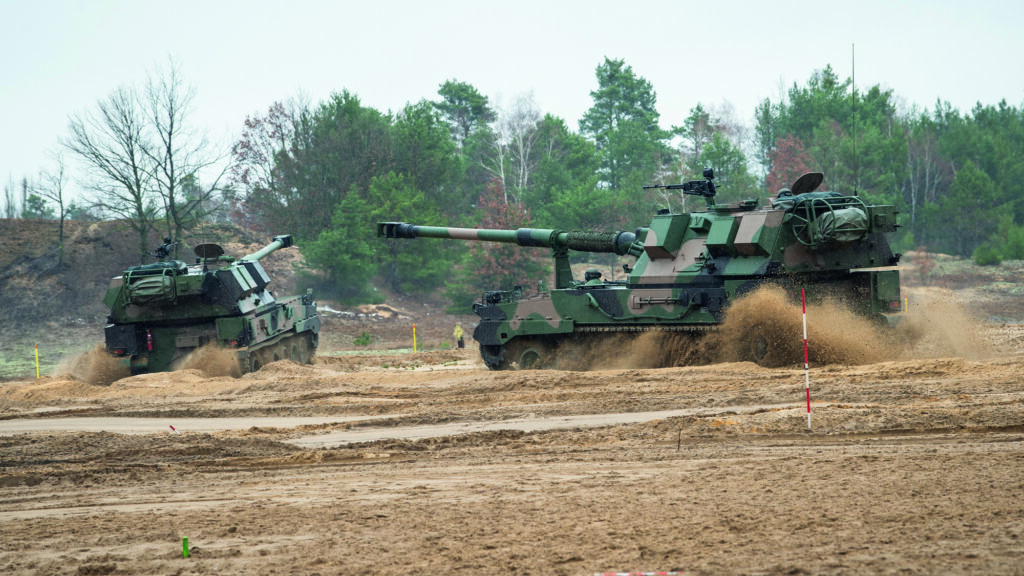
In November 2016, the Polish MoD signed a contract for the delivery of six batteries of the PILICA VSHORAD system. The contract has a value of over €169M and deliveries should conclude by 2022.
The PILICA programme envisions the procurement of six anti-aircraft AAA/SAM batteries, each consisting of six fire units, a command post, a radiolocation station, artillery tractors and ammunition supply vehicles. PILICA will be fitted with 23 mm AA autocannons and locally designed GROM/PIORUN missiles. The system will be manufactured and delivered by a ‘PGZ-PILICA’ consortium, composed of PGZ, Pit-Radwar, PCO and Zakłady Mechaniczne Tarnów, acting as the system’s integrator.
In late May 2020, the Polish Armament Inspectorate, which acts on behalf of the MoD, launched a technical dialogue procedure under the SONA programme, which will lead to working out the main technical and operational requirements for another VSHORAD system.
SONA should be capable of detecting, identifying and destroying a wide range of potentially hostile aerial targets, such as manned fixed and rotary-wing aircraft, unmanned aerial vehicles or rockets, artillery, and mortar rounds (C-RAM). The new system will have to feature a high level of mobility, and as such will be fitted on a tracked or wheeled vehicle, in order to keep up with detachments of armoured or mechanized brigades.
The SONA system will replace the currently operated ZSU–23–4 SZYLKA (SHILKA) air defence systems and the local modification, ZSU-23 – 4MP BIALA. SHILKA, which originated in the late 1950s, is an outdated, obsolete system, no longer meeting the requirements of the modern battlefield. BIALA is only slightly more capable, however, it also fails to provide the required operational potential.
More POPRAD Anti-Aircraft Missile Systems for Poland
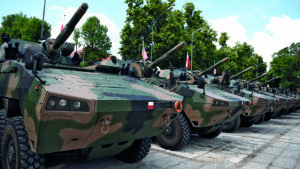
In late June 2020, the Polish MoD informed that another batch of POPRAD anti-aircraft missile systems had been delivered to the Army. Delivery included an unspecified number of systems which were handed over to the 15th Giżycko Mechanised Brigade.
In total, the Polish Army will take delivery of 24 POPRAD anti-aircraft missile systems this year, including 22 serial production sets and two prototype vehicles, which will be adjusted to the required standard. Aside from the 15th Giżycko Mechanised Brigade, POPRAD systems will be handed over to the 17th Mechanised Brigade and the 19th Lublin Mechanised Brigade, as well as to the Air Force Training Centre.
By the end of 2021, the Polish Army should receive all 79 POPRAD systems, including the two aforementioned prototype vehicles. These will be delivered under the terms of the agreement signed in 2015 with the system’s manufacturer, the Warsaw-based Pit-Radwar, which is a subsidiary of the PGZ.
The POPRAD self-propelled anti-aircraft missile system is intended for engaging low and medium altitude targets using heat-seeking missiles. Its basic functions are accomplished by a tracking-aiming observation system, fitted with a number of electro-optical sensors (thermal camera and laser range-finder).
The system also consists of a quadruple launcher of Grom heat-seeking missiles from Mesko, another subsidiary of PGZ. POPRAD uses a fire-guiding computer and a navigation and orientation system.
Target acquisition is based on a digital data radio-link from the automated air defence command and control system or is worked out autonomously. The missile launching system is mounted on the ŻUBR-P all-terrain, armoured vehicle manufactured by the local company AMZ Kutno.
Additional RAK Mortars for the Polish Army
In late May 2020, the Armament Inspectorate and a consortium of Polish defence companies signed an agreement for the delivery of an additional 40 120mm RAK mortar systems and 20 command post vehicles (AWD) manufactured by Huta Stalowa Wola and ROSOMAK SA, subsidiaries of the PGZ.
Under the terms of the agreement, deliveries should commence in 2022 and run through to 2024. The deal has a value of €159M. The number of additional RAK mortar systems and command post vehicles is equivalent to five artillery companies. Each unit consists of eight RAK mortars and four AWDs, as well as two artillery reconnaissance vehicles (AWR), three ammunition supply vehicles 8×8 (AWA), a mobile workshop 6×6 (AWRU) and a support vehicle 6×6 (WZ).
“The modernisation of the Polish Armed Forces relates to the procurement of modern combat systems. The RAK is one of the most technically advanced self-propelled mortar systems in the world, designed by Polish engineers,” said Andrzej Kensbok, President of the Management Board of PGZ.
The Polish Army currently operates 64 RAK mortar systems and 32 AWDs, which were ordered in 2016. The second agreement, covering the delivery of an additional 16 RAK mortars and eight AWDs, was signed last year. “The agreement for delivery of additional RAK mortar systems is a confirmation of high quality of weapon systems manufactured by PGZ. The initial order was finalised without any delays. We are currently engaged in the finalisation of the second agreement, signed in 2019,” said Bartłomiej Zając, President of the Management Board of Huta Stalowa Wola.
Rosomak-S AMVs for Poland
In spring 2020, the Minister of Defence, Mariusz Blaszczak, announced that his Ministry intends to procure 60 ROSOMAK-S armoured modular vehicles designed to carry SPIKE anti-tank guided missiles (ATGM). According to Błaszczak, the contract with the local ROSOMAK company, PGZ’s subsidiary, should be signed in 2020.
ROSOMAK-S is technically similar to the baseline ROSOMAK armoured modular vehicle, a local derivative of the Finnish PATRIA AMV. The main difference is that ROSOMAK-S is not equipped with any weapon systems (ROSOMAK in the standard configuration for the Polish Army is fitted with a 30mm HITFIST turret). Instead, each vehicle can carry up to two SPIKE ATGM launchers along with missiles and operators.
Today, only a marginal number of ROSOMAK-S vehicles are used in the Polish Army. They serve in the 12th and 17th Mechanised Brigades and provide support to artillery companies equipped with 120mm RAK self-propelled mortar systems.
Michal Jarocki




